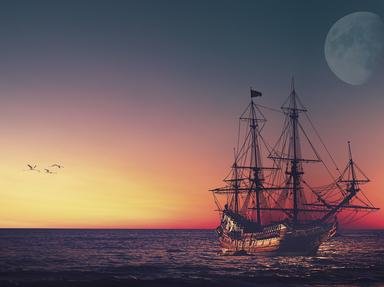Quiz Answer Key and Fun Facts
1. Although John W. Powell didn't sail the briny sea, he is known for having sailed and explored another waterway. Which river, with rocks and rapids, did Powell explore?
2. Hanno the Navigator explored the West African coast during the sixth century BC. What nationality was he?
3. This man had to sail the briny sea to get to the New World, but from then on he took other waterways. He also had great hopes, plans and goals for France from the waterways. In fact, he claimed the entire Mississippi Basin for France. What was this large-thinking man's name?
4. Our next sailor, Richard Lander, sailed the briny to get to Africa and explored two rivers in Africa in the 1830s. One was the Benue River. Name the other one.
5. In 1506 a Portuguese explorer came upon some islands in the south Atlantic Ocean and named them after himself. What are those islands now known as, since their name has been anglicized?
6. Dirk Hartog, who after sailing on the briny sea made a landing on an island in the Shark's Bay area of Australia in 1616, was of what nationality?
7. Our next sailor was a Russian who discovered the Pribilof Islands in the cold and briny Bering Sea. What was his name?
8. We all hear that Magellan circumnavigated the world, but he really didn't since he was killed before he was able to finish his trip. Who was his second in command who did complete the first circumnavigation of the world on the briny sea?
9. In the 19th century what British sailor explored the briny sea near the New Guinea coast and was honored by having a town named after him?
10. This young Australian lady did sail the briny sea. However, she wasn't sailing it for exploration of exotic, foreign, lands. Perhaps, but not mentioned that I know of, she was exploring it for exploration of herself. For whatever reason, in May 2020 she became the youngest person to sail solo and unassisted around the globe. What is her name?
Source: Author
habitsowner
This quiz was reviewed by FunTrivia editor
bloomsby before going online.
Any errors found in FunTrivia content are routinely corrected through our feedback system.
